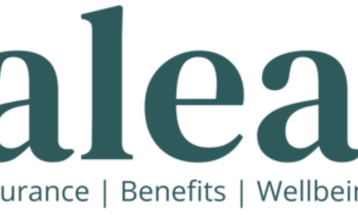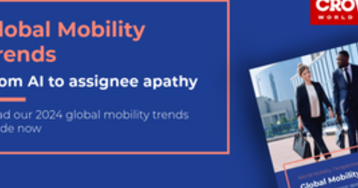Analyses & Studies • Sectors & markets • Foresight • Publications
HongKongEcho: The woman shaping the future of fit

“We were all so young. We didn’t know anything,” recalls Janice Wang about the beginnings of Alvanon, the company where she’s now CEO. Only in her twenties at the time, she took the responsibility for taking mannequins out of a time warp and into a precise science.
It all started with babies. Janice, usually measured and assured, recalls the 1970s-style mannequins of children she first encountered in a tone that wavers somewhere between exasperation and hilarity. “Those models were basically just round blobs; no child looks like that! If you look at a toddler, they’re all tums and bums,” says the CEO of global fashion innovations company Alvanon.
Her family ran one of Hong Kong’s premier children’s-wear brands – Janice is the third generation of an apparel business family – and thus mannequins for children became Alvanon’s first signature product.
“We don’t make clothes, but we make clothes fit better – there’s actually quite a lot in that idea,” she explains. Under her leadership over the last 17 years, they’ve turned mannequins from haphazard papier-mâché handicraft into precise science shaping the future of fit.
The result: millions shaved off bottom lines for apparel manufacturers worldwide.
Baby steps
When body scans and 3D rendering were in their infancy her father was thinking about how such technology could reshape the entire chain between design, production and consumption.
Mannequins shaped by big data from body scans became the means to that end.
Janice took the reins of Alvanon as CEO in 2002 with only a handful of staff and two small offices in Hong Kong and New York. A previous stint in South America at Chase Manhattan Bank – “Partly to escape doing the family business,” she says with a laugh – taught her the basics of balance sheets and investment, but otherwise she was raw.
In her twenties, with a bundle of data and some game-changing technology in tow, she began knocking on the doors of some of the world’s biggest fashion brands trying to instigate change.
At ease but intense in her recollections, Janice revisits the early days with full sympathy for other startup founders who face similar struggles. “We were all so young. We didn’t know anything about dealing with things like legal structures and taxation issues. Meanwhile we had to figure out how to deliver a high-quality product that hadn’t really been done before.”
What she needed was endorsement from equally visionary clients; people who could match her own lofty ambitions and willingly invest in her more expensive mannequins. They came in the form of retail giants Target, and later Marks & Spencer; two mammoth clients who are responsible for the company’s scale and success today.
Ups and downs
The breakneck speed at which the company was expanding meant there was little time to pause for breath. Her pregnancy in 2008 changed this. The startup period was over, she realised, and the company needed to professionalise its internal processes. They’d grown up.
Another rollercoaster period ensued. The strange chaos of the 2008-9 financial crisis coalesced with what Janice describes as a “major blow to the gut,” when her father Dr Kenneth Wang was diagnosed with a rare, aggressive cancer leaving Janice and the rest of the family – two of her four brothers also work in the company – just 18 months with the visionary before his passing.
“It was an extremely difficult period for us. We had to really take a step back from the business and rely on the internal processes we’d set up during my pregnancy. To that extent, our team did an incredible job holding the fort in our absence.”
The company, these days, continues to push the boundaries of what it means to be a fashion innovator. January 2018 marked the launch of their new innovation hub in Shanghai, while their 2016 project in collaboration with the Paris Opera drew the attention of the likes of the New York Times.
The female question
When asked what it means to be a female CEO and entrepreneur, Janice takes a momentary pause, weighing the complexity of what is a multi-layered conundrum. “Yes,” she acknowledges, “I’m a female CEO in a Chinese family, working with my brothers, in an industry that caters to women but is often dominated by men in the upper echelons of brands.”
However she feels, in the context of Hong Kong, such a feat is made easier by the affordability of domestic help and a general tradition of women in the workforce.
“It’s interesting, because instinctively you would think it should be more difficult for female entrepreneurs in Asia. In fact it’s easier. You don’t have to choose between having a career and having a family. In the West, that choice can be more complex because there isn’t the same readily-available support network.”
There are other advantages for female entrepreneurs too, according to Janice. The collaborative soft-power skills she sees more commonly in female founders are vital to building a long-term company culture. “It’s those strengths that women launching their startups need to focus on. If all you want to do is complain about barriers, then you might want to rethink this path,” she says with typical candour.
Likewise, she emphasises the need for female entrepreneurs to not only seek advice from fellow women but to be open to advice from all sources and all age groups.
Ultimately she’d like to steer clear of what she sees as the polarisation of debates around gender. “I totally understand there needs to be a promotion of women as both entrepreneurs and in the workplace more generally. But I don’t think it should get to a point where there’s an enormous divide between men and women – because it’s a spectrum after all. Our differences are not black-and-white. Discussions about gender shouldn’t be divisive, otherwise we just go nowhere.”



